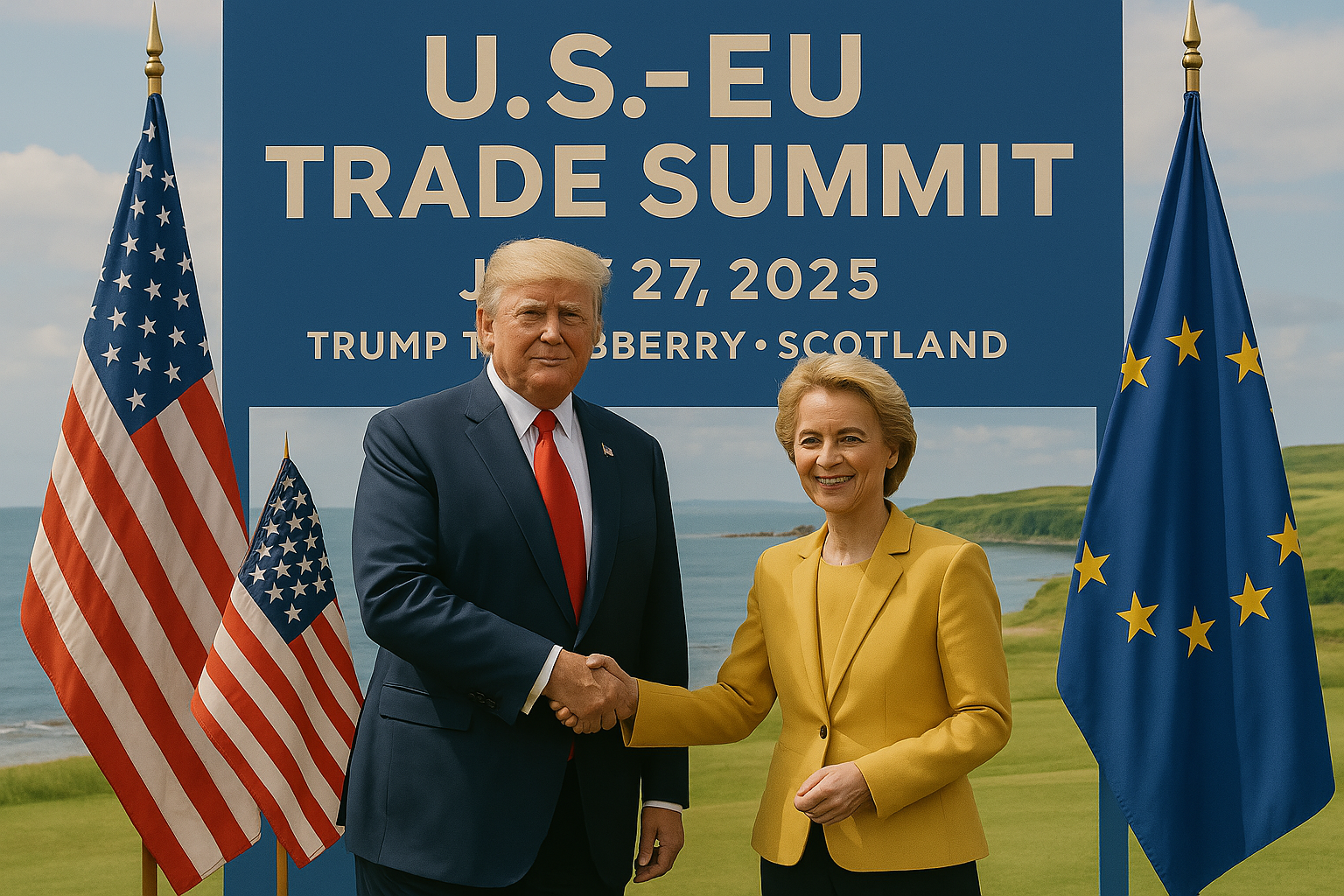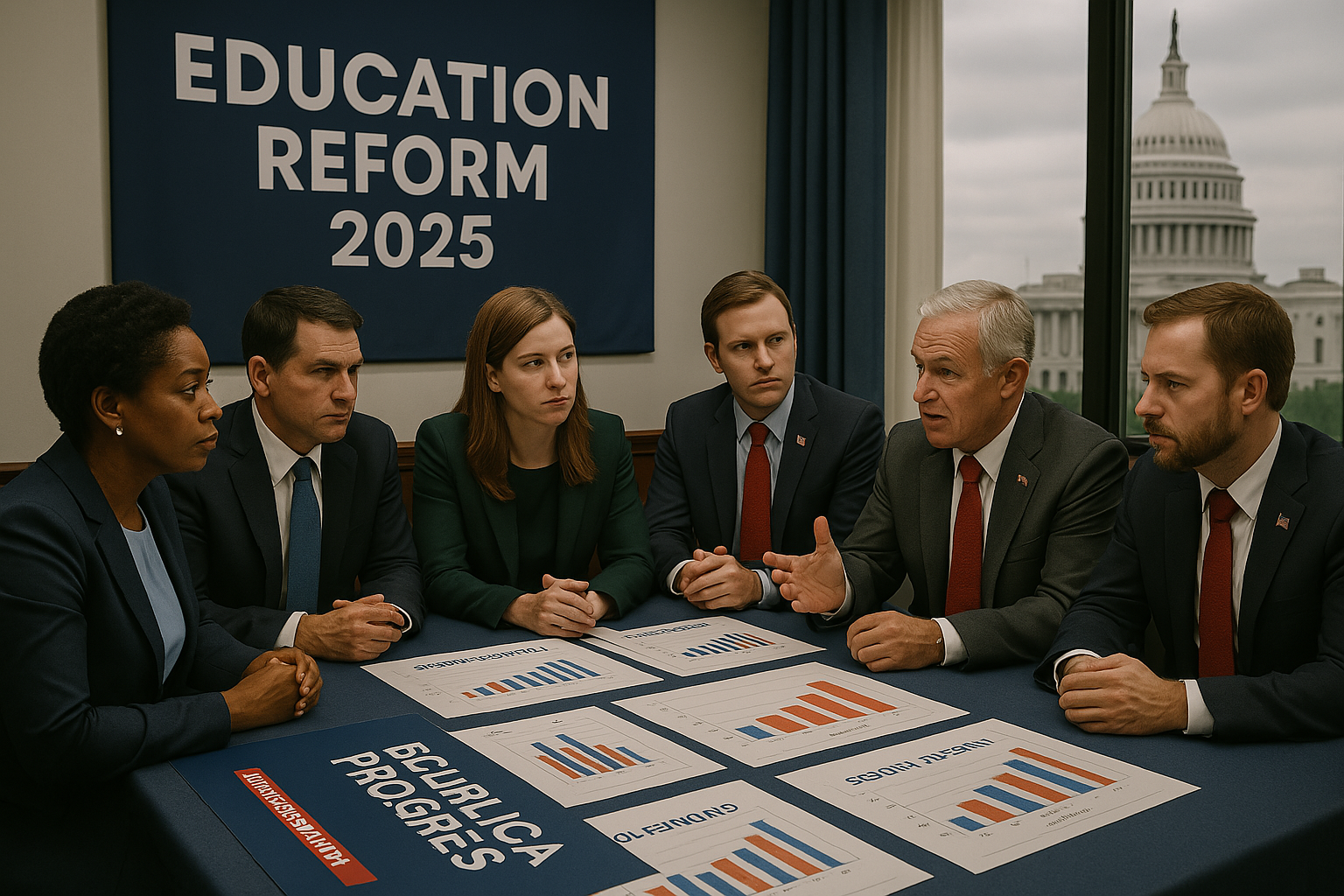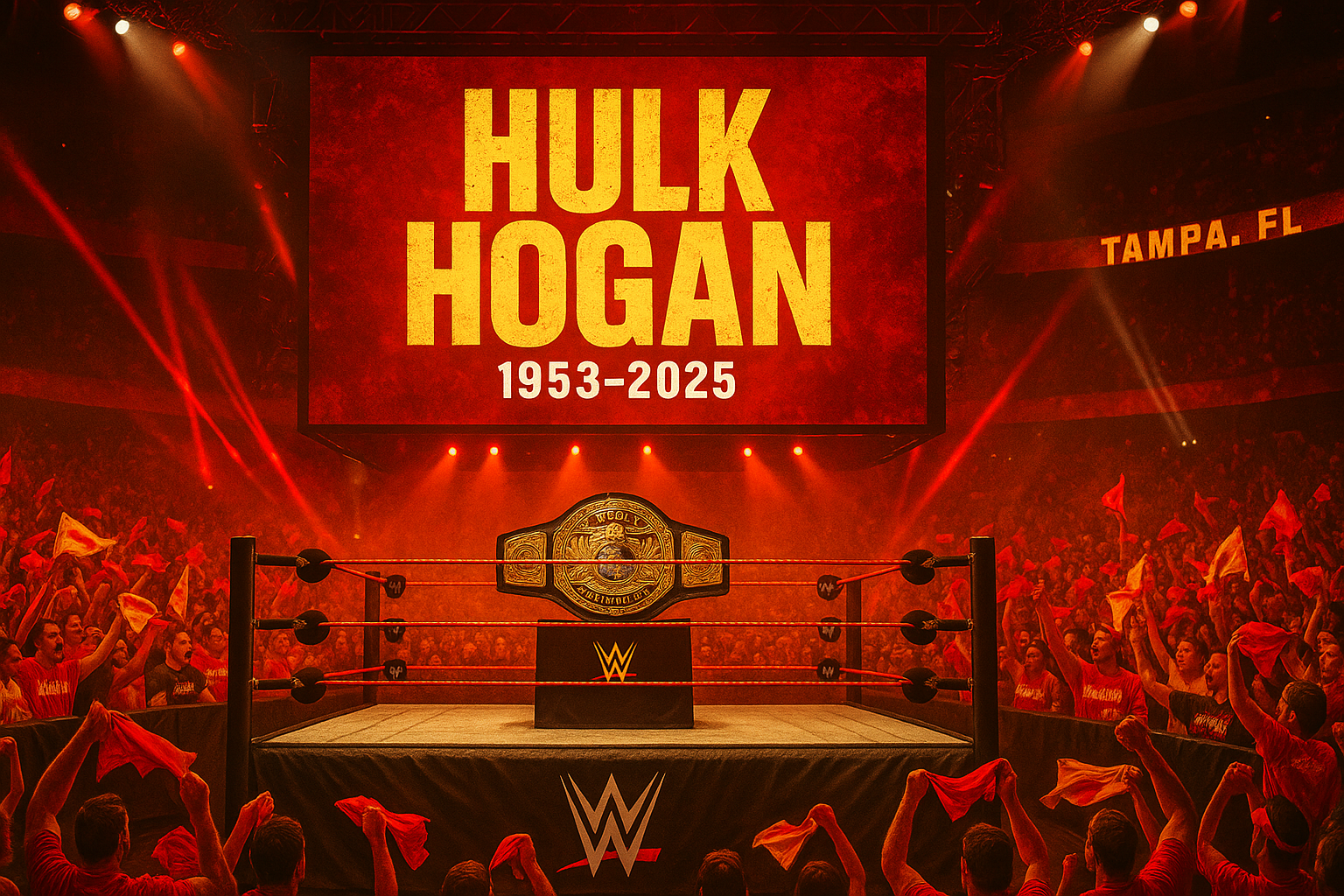U.S.-Europe Trade Deal 2025: Trump Meets EU in Scotland

On July 25, 2025, President Donald Trump landed in Scotland, sparking optimism for a U.S.-Europe trade deal 2025 as he prepares to meet European Commission President Ursula von der Leyen on Sunday. With a looming August 1 deadline for 30% tariffs on EU goods, the talks aim to avert a trans-Atlantic trade war. Trump called the chances of a deal “50-50,” fueling both hope and uncertainty. What could this mean for global markets? This article explores the negotiations, their context, reactions, and the broader implications of a potential agreement.
Trump’s Scotland Visit and Trade Talks
President Trump arrived at Prestwick Airport in Ayrshire, Scotland, on July 25, 2025, for a five-day visit blending business and diplomacy. He is set to meet von der Leyen on Sunday to discuss trans-Atlantic trade relations, following a “good call” where they agreed to keep relations “strong,” per von der Leyen’s X post. Trump, speaking to reporters, estimated a “50-50 chance” of securing a deal, signaling progress but no guarantees. He also plans to meet U.K. Prime Minister Keir Starmer to refine a recent U.S.-U.K. trade deal, likely at his Trump Turnberry or Aberdeen golf courses. The talks come amid Trump’s threat of 30% tariffs on EU imports starting August 1, announced on Truth Social, escalating tensions after months of negotiations.
Context of U.S.-EU Trade Negotiations
The U.S.-Europe trade deal 2025 is critical as Trump’s tariff threats—peaking at 50% on steel—have rattled markets and European industries. In April 2025, Trump paused a 50% tariff plan to allow negotiations, but a July 12 announcement raised EU tariffs to 30%, shocking negotiators who expected a 15% baseline with exemptions for sectors like pharmaceuticals and lumber. The EU, led by von der Leyen, seeks a framework deal similar to the U.S.-U.K. agreement, which set a 10% tariff on most British goods. Germany pushes for a quick deal to protect its carmakers, while France urges caution to avoid a one-sided agreement, per Reuters. The EU has prepared €95 billion in retaliatory tariffs on U.S. goods like bourbon and motorcycles if talks fail.
- Key Negotiation Points:
- U.S. Demands: Market access, exemption from EU’s carbon tax on steel.
- EU Demands: Lower tariffs, especially on steel (50%) and cars (15%).
- Deadline: August 1, 2025, for tariff implementation.
Stakeholder Reactions
U.S. and EU Leaders
Trump expressed cautious optimism, calling von der Leyen “highly respected” but criticizing EU trade practices as “nastier” than China’s. Von der Leyen emphasized maintaining “strong” trade ties, while German Economy Minister Katherina Reiche urged pragmatic negotiations to avoid economic harm. Italy’s Prime Minister Giorgia Meloni warned against a trade war, advocating for a “fair agreement” to strengthen the West.
Industry and Analysts
The Federation of German Industries warned that tariffs could disrupt innovation and economic recovery. Bernd Lange, head of the European Parliament’s trade committee, called Trump’s tariff hike “brazen” and urged immediate EU countermeasures. On X, @ClamanCountdown reported Trump’s claim of a “50/50 chance” for a deal, boosting market optimism, with European auto stocks rising after a similar U.S.-Japan deal.
Public Sentiment
Scottish protests, led by the Stop Trump Coalition, plan a “festival of resistance” on July 26, citing Trump’s environmental and democratic record. @ralakbar on X noted “sticking points” in EU talks, reflecting uncertainty. Conversely, @BreakingNews4X highlighted hopes for a framework deal to end months of uncertainty for European industries.
Economic and Political Implications
- Economic Impact: A deal could stabilize trans-Atlantic supply chains, protecting $107.4 billion in EU exports. Without it, 30% tariffs could raise U.S. consumer prices and disrupt industries like German cars and Italian wine.
- Political Dynamics: The talks test Trump’s deal-making strategy, favoring one-on-one leader meetings over multilateral frameworks like the WTO. Europe’s preference for consensus clashes with Trump’s unilateral approach.
- Global Trade: Success could set a precedent for deals with Japan, India, and others, while failure risks a broader trade war, with the EU’s planned €95 billion retaliation targeting U.S. goods.
- U.S.-U.K. Relations: The parallel U.S.-U.K. deal, with a 10% tariff, positions Britain favorably compared to the EU’s 15–50% rates, strengthening bilateral ties.
Progress and Challenges
The EU’s scaled-back goal of a framework deal—similar to the U.S.-U.K. and U.S.-Japan agreements—faces hurdles. Steel tariffs remain a sticking point, with the EU unable to secure a reduction from 50%. Trump’s insistence on zero EU tariffs, as stated in his Truth Social letter, complicates negotiations. European diplomats, wary of Trump’s last-minute reversals, adopt a “nothing is agreed until everything is agreed” stance. The U.S.-Japan deal, with a 15% auto tariff, has raised EU hopes for similar concessions, but U.S. automakers criticize inconsistent tariff policies affecting North American supply chains.
Conclusion
The U.S.-Europe trade deal 2025 hangs in the balance as Trump and von der Leyen prepare to meet in Scotland. With a 30% tariff looming, the talks could either avert a trade war or escalate tensions, impacting global markets and consumers. The U.S.-U.K. deal’s success offers hope, but sticking points like steel tariffs and Trump’s unpredictable style keep the outcome uncertain. Share your thoughts on this critical trade negotiation below, and follow our updates for the latest developments.










